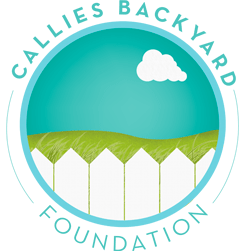
Home | Mission | Contact Us | Who We've Helped
In Our Own Backyard
How We See the Problem
Over the past twenty years there has been erosion in traditional societal norms and value systems in the United States that in years past helped guide young people through their early developmental years. The deterioration of these systems combined with ever increasing distractions, temptations and family dysfunctions has led to an increase in that part of our youth population the we define as at-risk. The term at-risk is used to describe a broad range of issues that confront our youth. Many of these children are victims of abuse and neglect, poverty, homelessness, exposure to excessive violence, pornography, drugs, alcohol and adult dysfunction. They are at risk for suicide, addiction pregnancy, prostitution, incarceration, and perpetuating the generational cycle of dysfunction.
The bottom line is those who serve young people in our education, human service, and criminal justice systems find that they are confronted with youth from dysfunctional situations that require support systems for the kids that are either
non-existant or already stretched beyond capacity. As an example, in the past two years of economic recession Boulder County has lost many child focused programs in government, in the school system, in the not-for-profit sector and in the for-profit sector. In the past month twenty-two case workers with Child Welfare have lost their jobs. The county has lost numerous foster homes, group homes and residential treatment facilities serving mentally ill and substance abusing youth. There is only one psychiatric hospital left in Boulder county, the cost of which is prohibitive. Out patient services have diminished.
While non-profit organizations have tried to fill the gaps in county services, many have had to close, and others are on the brink. Wait lists for county services are long. Kids can not put their problems on hold while we look or ways to serve them and meet their needs. Without intervention, prevention and education programs, directed at our youth who are struggling, we run the risk of losing them to society's predators. These individuals are more than happy to recruit these kids into prostitution, pornography, and drug trafficking.
What We Want To Do - Our Purpose
Fund strategies in four areas of concern:
- Enforcement - In 2005 through HB1143 the State of Colorado created the "Colorado Interagency Task force on Trafficking in Persons". Law enforcement agencies from Federal, State and Metro area governments are members of this task force. As reported by the Denver Police Department , this effort in the Denver Metro area has been under funded and as a result ineffective. They are not able to sustain complex investigation to make inroads to the organizations that prey on the most vulnerable of our kids. We intend to fund a Sex/Human Trafficking Task Force with the Denver Police and the FBI. Mission accomplished September 2011.
- Prevention - Strengthen existing organizations that have a proven track record of serving at-risk kids in the Denver/Boulder area who are victims of abuse and neglect, poverty, homelessness, exposure to excessive violence, pornography, drugs and alcohol, and adult dysfunction.
- Diversion, Transition - Rebuild diversion and transition programs within the judicial, educational, and not-for-profit sectors in the Denver/Boulder metro area.
- Research and Evaluation - support research efforts of The University of Denver Task force on Modern Slavery and Human Trafficking.
How We Work
Our Operating Principles and Philosophy
- We believe in under promising and over delivering.
- We have a bias against funding new organizations.
- We believe in funding those organizations that are recognized as the best at what they do in the areas we are interested in impacting.
- We do not believe in the Request for Proposal process as it consumes a ridiculous amount of the precious resource of an organizations time.
- We seek out organizations that have demonstrated over time, that they are competent in the area we are interested in funding.
- We see our greatest service as providing our partners with the highest leverage resources they feel will aid them in their work.
- We do not normally fund more than 10% of an organization's budget.
- We seek to provide commitments of 3 years when we decide to partner with an organization, subject to agreed upon performance criteria.